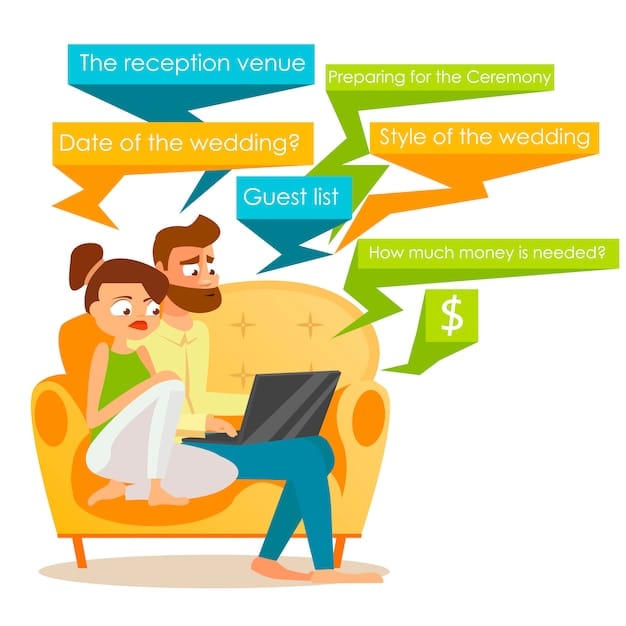How to Handle Negative Reviews & Turn Customers into Advocates

Handling negative reviews effectively involves promptly addressing concerns, offering solutions, and viewing complaints as opportunities to improve and build customer loyalty, ultimately turning detractors into brand advocates.
Navigating the world of online reviews can be tricky, especially when you encounter negative feedback. But what if you could transform those complaints into opportunities for growth and strengthen your relationship with your customers? Let’s explore how to handle negative reviews and turn dissatisfied customers into advocates, boosting your business’s reputation and fostering long-term loyalty.
Understanding the Impact of Negative Reviews
Negative reviews can sting, but understanding their impact is the first step in managing them effectively. They are not just complaints; they are valuable insights into areas where your business can improve.
Negative reviews can significantly influence potential customers’ decisions. Studies show that a single negative review can deter a substantial percentage of potential buyers. However, how you respond to these reviews can mitigate the damage and even turn it into a positive experience.
The Ripple Effect of Online Feedback
Online reviews have a ripple effect. They don’t just affect the individual who wrote the review; they influence everyone who reads it. A well-handled negative review can demonstrate your commitment to customer satisfaction, while an ignored one can signal apathy.
Perception is Everything
Ultimately, perception is everything. Customers and potential clients will perceive your brand based on the aggregation of reviews and your responses to them. Actively managing your online reputation is crucial for maintaining a positive brand image.

- Impact on Sales: Negative reviews can directly impact sales, especially if they highlight critical issues with your product or service.
- Brand Reputation: Unattended negative feedback can tarnish your brand’s reputation, making it difficult to attract new customers.
- Customer Loyalty: Addressing negative reviews effectively can increase customer loyalty, as customers appreciate being heard and valued.
Understanding the impact is not about fearing bad reviews but recognizing them as opportunities. They provide invaluable feedback that can guide improvements and highlight strengths to leverage.
The Golden Rules of Responding to Negative Reviews
Responding to negative reviews is an art form. There are a few golden rules to keep in mind to ensure your response is effective and beneficial.
Remember, your response is not just for the reviewer but for everyone who reads it. Keep a calm, professional tone while answering the grievances with appropriate discretion.
Respond Promptly
Time is of the essence. Aim to respond to negative reviews as quickly as possible, ideally within 24-48 hours. A swift response shows that you value your customers’ time and concerns.
Be Empathetic
Always start by acknowledging the customer’s feelings. Use phrases like, “I understand your frustration” or “I’m sorry you had this experience.” Show that you genuinely care about their issue.

- Acknowledge and Validate: Show that you understand the customer’s point of view.
- Offer Solutions: Provide concrete solutions to resolve the issue, whether it’s a refund, a replacement, or a discount.
- Take it Offline: Offer to continue the conversation privately to resolve sensitive details.
Following the golden rules isn’t about being right; it’s about doing right by your customer and demonstrating your commitment to exceptional **customer** service, even in the face of criticism.
Crafting the Perfect Response
The perfect response to a negative review is thoughtful, personalized, and proactive. It demonstrates your commitment to resolving the issue and improving the customer’s experience.
Tailoring your response to each review ensures the customer feels heard and understood, which is crucial for turning a negative experience into a positive interaction.
Start with an Apology
Begin by sincerely apologizing for the negative experience. A simple “I’m sorry” can go a long way in diffusing anger and showing that you take responsibility.
Acknowledge Specific Points
Address the specific issues raised in the review. Show that you’ve read and understood their concerns by referencing specific details they mentioned. Show that you were listening to the customer.
Propose a Resolution
Offer a concrete solution to resolve the problem. This could be a refund, a discount on a future purchase, a replacement product, or a personalized apology from a manager.
- Personalize Your Response: Avoid generic replies; tailor each response to the specific review.
- Outline Actions Taken: Detail specific steps you’ve taken to prevent similar issues in the future.
- Invite Further Contact: Encourage the customer to reach out directly with any additional concerns.
Crafting the perfect response demonstrates empathy and a genuine desire to make things right, turning a negative experience into a positive outcome.
Turning Negative Feedback into Business Growth
Negative feedback, while often unpleasant, is a goldmine of opportunities for business growth and improvement. It can reveal areas of weakness and areas where your business can truly improve.
Viewing negative feedback as a means of growth helps refine your business processes, improve customer interactions, and ultimately enhance your product or service quality.
Identify Recurring Issues
Pay attention to recurring themes in negative reviews. Are multiple customers complaining about the same problem? This could indicate a systemic issue that needs to be addressed.
Implement Changes
Use the feedback to implement changes in your business operations. Whether it’s improving product quality, enhancing customer service training, or streamlining processes, take concrete steps to address the concerns raised.
- Analyze Feedback: Regularly analyze reviews to identify patterns and trends.
- Prioritize Improvements: Focus on addressing the most pressing and frequently mentioned issues.
- Monitor Results: Track the impact of changes to ensure they are effectively resolving the issues.
By embracing change and proactively responding to feedback, you transform the challenges of negative reviews into real business advantages.
Preventing Negative Reviews
The best way to handle negative reviews is to prevent them in the first place. Proactive measures and excellent customer service can significantly reduce the likelihood of negative feedback.
Prioritizing customer satisfaction and addressing potential issues before they escalate not only minimizes negative reviews but also fosters a culture of customer advocacy.
Set Realistic Expectations
Be transparent about what your product or service can and cannot do. Avoid overpromising and underdelivering. Make sure your offerings correspond meaningfully with the customer’s need.
Provide Excellent Customer Service
Train your staff to provide outstanding customer service. Empower them to resolve issues quickly and efficiently. Be helpful and friendly and your clients will be thankful for a positive encounter.
Seek Feedback Proactively
Request feedback from customers regularly. This shows that you value their opinion and gives you an opportunity to address concerns before they turn into negative reviews.
- Train Your Staff: Provide comprehensive training on customer service best practices.
- Use Feedback Tools: Implement tools such as surveys and feedback forms.
- Follow Up: After addressing an issue, follow up with the customer to ensure satisfaction.
Taking steps to prevent negative reviews is an investment in customer satisfaction, brand reputation, and long-term business success.
Building a Community of Advocates
Turning dissatisfied customers into advocates is the ultimate goal. Customers who have had a negative experience and seen it resolved are often your most loyal supporters.
Once a negative experience has become a positive one, these customers provide powerful testimonials and referrals, fueling organic growth and positive brand perception.
Follow Up After Resolution
After resolving a customer’s issue, follow up to ensure they are completely satisfied. This shows that you care about their experience beyond just fixing the problem.
Request Testimonials
Once a customer is satisfied, ask if they would be willing to share their positive experience in a testimonial or review. Offer them an incentive to make the process easier.
- Share Positive Stories: Highlight stories of customers who have had their issues resolved.
- Engage on Social Media: Interact with customers positively on social media platforms.
- Reward Loyalty: Offer exclusive deals and promotions to loyal customers.
Turning detractors into advocates involves dedication and perseverance. By transforming negative experiences into positive connections, you foster unwavering loyalty and strengthen your brand’s reputation.
| Key Point | Brief Description |
|---|---|
| 👂Listening to Customers | Take time out to deeply listen to your Customers, and digest their grievances with a grain of salt. |
| 🤝 Respond Thoughtfully | Avoid canned responses and be empathetic whilst addressing the problem and providing resolution. |
| 🌱 Turn Feedback to Growth | Use the feedback you have obtained to refine shortcomings or issues in your business. |
| 🛡 Proactive Prevention | Prevent negative reviews by setting realistic client expectations, great support and consistent service. |
Frequently Asked Questions (FAQ)
▼
Ideally, respond within 24-48 hours. A prompt response shows customers that you value their feedback and are committed to addressing their concerns quickly.
▼
Address it professionally. State your case clearly and politely, providing any evidence to support your perspective, while still demonstrating empathy for the customer’s experience.
▼
Make it easy for them. Provide direct links to review platforms and ask for feedback after a positive interaction or purchase. Offer incentives, if appropriate, to encourage their participation.
▼
No. Deleting reviews can erode trust. Instead, address concerns constructively, showing you’re committed to improvement. Use it to demonstrate transparency with **customer** feedback.
▼
Offer solutions tailored to the situation, such as refunds, discounts, replacements, or personalized apologies. Show you are willing to go the extra mile to make things right.
Conclusion
Turning detractors into advocates requires a blend of empathy, proactive communication, and a steadfast commitment to customer satisfaction. By implementing these strategies, you can enhance your business’s reputation, foster long-term loyalty, and build a community of advocates who champion your brand.





